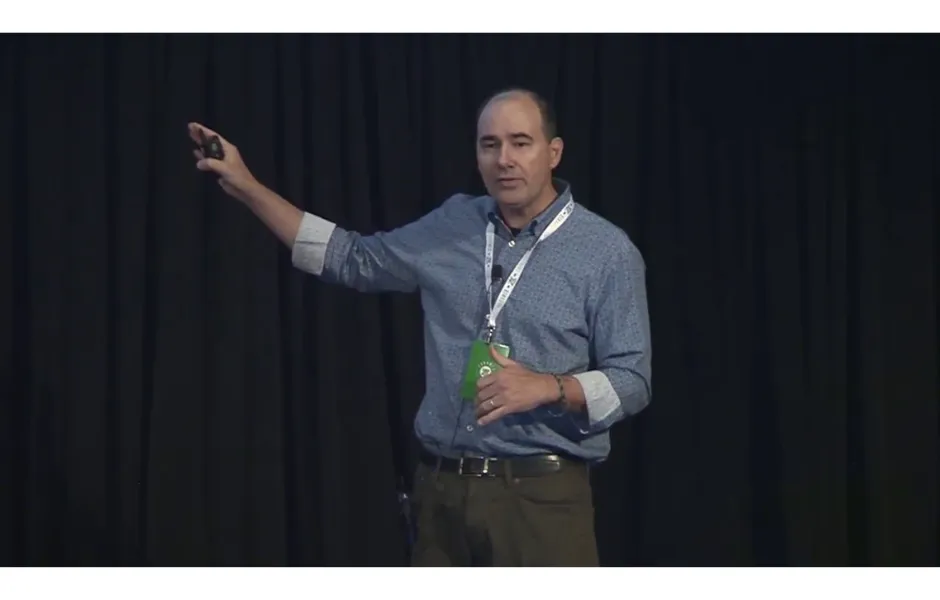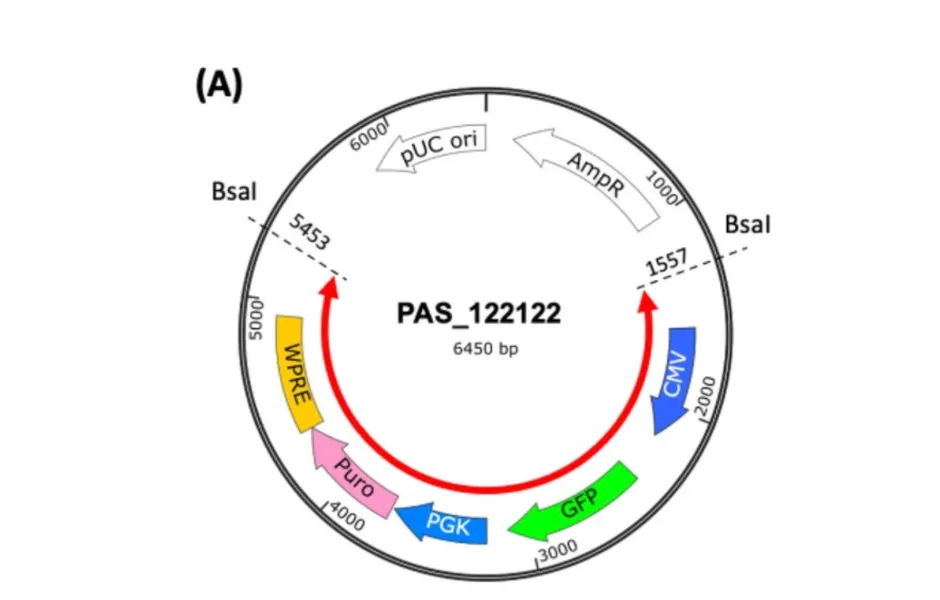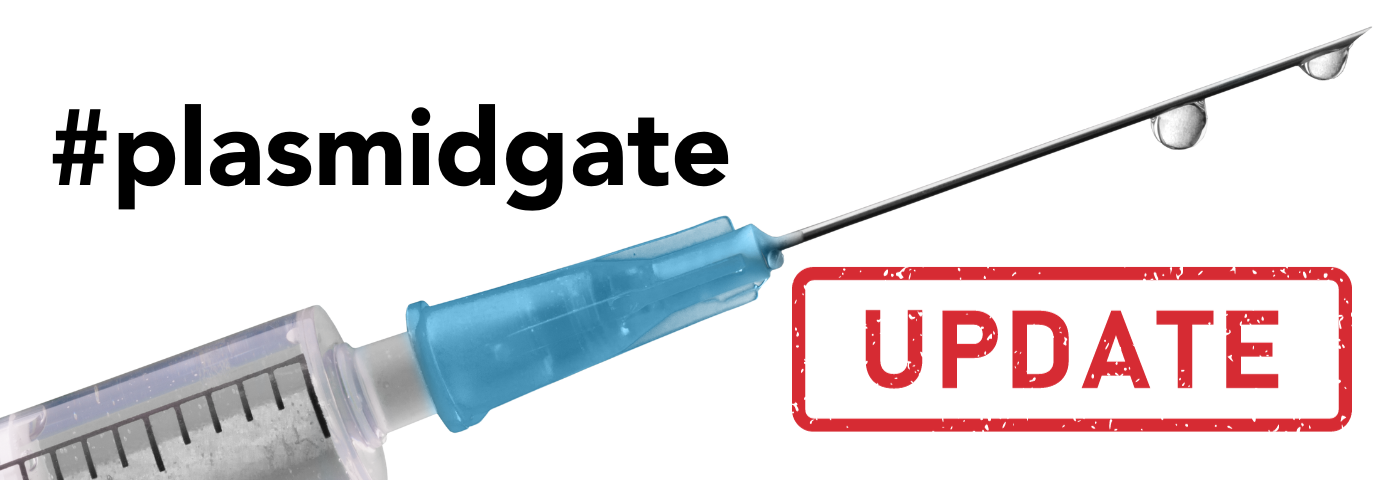The following post is syndicated from Rebekah Barnett
Kevin McKernan is the genomics scientist who first discovered plasmid DNA contamination in the mRNA Pfizer and Moderna Covid vaccines (trending as #plasmidgate). McKernan has been working in his field for 25 years, having managed R&D for the Human Genome Project at Whitehead Institute/MIT, and now heading up cannabis and hemp science company Medicinal Genomics as founder and Chief Science Officer.
I originally conducted this interview with McKernan in August for my article, COVID vaccines and your DNA: What the science tells us (and what it doesn’t), and had the intention of writing up the interview in full at the time. I then fell quite ill and was out for the count for a few weeks, during which time #plasmidgate developed, with new labs confirming McKernan’s findings of DNA contamination in the mRNA vaccines.
Then, in September, South Carolina scientist Dr Phillip Buckhaults testified about the DNA contamination in a state Senate hearing, and the story gained momentum. At the end of the month, Spectator Australia was the first outlet to take #plasmidgate somewhat mainstream with the publication of my article, Scientists ‘shocked’ and ‘alarmed’ at what’s in the mRNA shots. The article got 34 million views in the first three days. (See my reaction to the news in my Spectator TV interview with Alexandra Marshall, here. My interview is first up, and it’s free to watch.)
As #plasmidgate unfolded, McKernan and I continued our back and forth. Below is a collated and lightly edited selection from our conversations, organised by topic. McKernan’s candour on this hot-button topic is a breath of fresh air.
If you don’t already follow Kevin McKernan, I recommend subscribing to his Substack, and following him on X. [DDU notes below in square brackets]

Genomics scientist Kevin McKernan
On the discovery of the DNA contamination in the mRNA vaccines
McKernan: I wasn’t actually looking for it. People had sent me some of these vials anonymously because I had published a paper with Dr. Peter McCullough on potential mistranslations of the vaccine, and how different the vaccine RNA might be from the actual virus.
So people sent these vials to me and I put them in the freezer. We were doing another RNA sequencing experiment in the cannabis field trying to track down some pathogens in that space and it wasn’t behaving, so someone suggested ‘Hey, why don’t you spike in an RNA that you know works.’ I realised I had some of these vials in the freezer and pulled them out to use as controls.
I was shocked… that there was DNA in there… and they’re forcing them to pregnant women and children, and that wasn’t disclosed in informed consent, so the world doesn’t know about it.
They worked, but what I was shocked by was that there was DNA in there. And that’s when I started writing all these Substacks and preprints to try to inform people of the fact that there’s DNA in these things and they’re forcing them to pregnant women and children, and that wasn’t disclosed in informed consent, so the world doesn’t know about it.
On publishing findings in preprint form & the importance of replication over peer review
McKernan: We knew it was controversial. Putting the data public was the right thing to do, but the more important thing is to make it very easy for someone else to reproduce and verify the results because peer review can take a year and for something politicised like this it may never occur.
So we spent time to develop a quantitative PCR assay that could confirm this. You’re probably familiar with PCRs in that some people were calling these things [Covid infection] out a CT of 35 or 40. But we’re finding the DNA contaminant at a CT of like 15 to 16.
DDU: Meaning that there must be a lot of DNA contamination in there?
McKernan: Yeah, a million times more than what you might call someone for having a virus in their nose. They’re injecting a million times more contaminant in every shot. So it’s it’s not a small amount.
DDU: And has this been replicated?
McKernan: Yes, a few others have reproduced this work, which is what’s most important. More important than peer review is that someone can reproduce this. Half the stuff that gets into peer review isn’t reproducible.
[Others who have reproduced McKernan’s findings include aforementioned Dr. Buckhaults, Dr. Sin Hang Lee, Prof. Dr. König and Dr. Kirchner]
DDU: Have you attempted to get your findings peer reviewed?
McKernan: Not yet. We’ve been waiting to get confirmation from other labs before we go through, and all that’s all that’s rolling in now, so we’ll probably submit it some more shortly. But I’m not hopeful that it’s gonna go well, because the papers that do touch on this third rail, once they get through peer review, a team of people probably funded by pharma comes in and attacks them and tries to get them retracted. And, you know, it’s just a big political mess.
On finding out if DNA contamination is lingering in vaccinated people
McKernan: I think the next step isn’t so much peer review on whether the DNA is in there – I think people agree it’s there – it’s, can we find it in patients? Is it lingering after vaccination?
One of the first places to look is probably the monocytes, because the monocytes are where people have reported the spike protein persisting for up to 15 months after vaccination.
The problem prior to us putting these sequences public was that it was very difficult to discern the spike protein from the virus than from the vaccine, because they’re both so similar. The protein in the vaccine is only two amino acids different, two prolines. But at the DNA level, they [the vaccine manufacturers] codon optimised, which means that the DNA that codes for the [spike] protein is dramatically different. It’s actually only 72% identical at the DNA level.
On genetically modified organisms (GMOs) & gene therapies
DDU: There’s a court case in motion here in Australia that alleges that the mRNA Covid vaccines contain unlicenced GMOs. They make three central claims, and I want to get your take.
First, they claim that the contaminant DNA found in the mRNA vaccines comprises a GMO. Do you agree?
McKernan: Yes. According to the legal definition in Australia, I believe it does fit. I’ve been looking at that court case and I put in an affidavit for it. There’s one reason that really nails it home, which is that the Pfizer vaccine in particular has an SV40 72 base pair enhancer.
DDU: Is an ‘SV40 enhancer’ the same thing as an ‘SV40 promoter’?
McKernan: They are technically different features of the DNA but they overlap in sequence. The SV40 promoter contains the SV40 Enhancer and the SV40 Origin of replication and a few more bases.
DDU: Is the SV40 enhancer/promoter found in the Moderna vaccine too?
McKernan: Moderna doesn’t have it, but it may still qualify as a GMO under Australian regulations because the LNP [lipid nanoparticle] and the transfection that they’re using is arguably a genetic modification.
DDU: Can you explain the SV40 72 base pair enhancer aspect further?
McKernan: The SV40 72 base pair enhancer in the Pfizer vaccine is what is used to drive DNA into the nucleus. It’s used in gene therapies. There’s a gentleman who’s published on this named David Dean out of Rochester University. He uses that particular sequence, and when you read his work, you can see that it’s effective at getting DNA into the nucleus, which is what you need to make gene therapy work.
The SV40 72 base pair enhancer in the Pfizer vaccine is what is used to drive DNA into the nucleus…. which is what you need to make gene therapy work.
DDU: So do we know if these DNA contaminants enter the cell nucleus? The court case argues that the alleged GMOs in the vaccines may be entering the cell nucleus.
McKernan: There are two papers, Alden, and Sattar, showing a couple of mechanisms at play. Alden shows the [vaccine] mRNA can turn into DNA. The Sattar paper shows the spike protein has a Nuclear Localisation Sequence (NLS) and it drags its own mRNA into the nucleus, which is a really curious finding.
The SV40 DNA also has a Nuclear Targeting Sequence (NTS). They use NLS to describe peptides and NTS to describe nucleotides, although these often get mixed up in the literature.
DDU: So you’re saying we’ve got two papers demonstrating that the vaccine mRNA and the viral spike protein have been found in the cell nucleus, and now the SV40 72 base pair enhancer provides a mechanism for the same to occur with the contaminant DNA, is that correct?
McKernan: It’s an additional mechanism, because the first mechanism described was the one where spike protein gets expressed and it localises to the cell nucleus, and for some reason drags the mRNA with it. At least, that’s what the Sattar paper was alluding to.
Now we have evidence that there’s DNA present that could do this as well and so there’s another mechanism at hand that could be driving things into nucleus, which elicits all types of concerns over GMOs and gene therapies.
DDU: The third claim made in the case is that after these alleged GMOs enter the cell nucleus, they may alter the DNA or the genome of the vaccinated person. Can you speak to this?
McKernan: We don’t have evidence of that yet, but that’s the next thing people need to look for. Oncologists are now taking that very seriously. Even oncologists that have vaccinated themselves and or have been on board with this vaccine have said, this is not something to ignore.
On the risk of genomic integration of contaminant DNA
McKernan: We should start measuring this and find out at what frequency genomic integration occurs. Because a piece of DNA could get in there that has an open reading frame and that could make some type of protein that becomes antigenic. [i.e.: It makes an antigen that the immune system sees as foreign and wants to destroy]
A well-respected cancer researcher who saw our work and said, ‘OK, yeah, this is something. It may be a low risk, but we have to pay attention to it based on the number of people that have received these things.’
The number of molecules that are in each shot isn’t ‘one.’ It’s like a billion or more of these DNA molecules. So we have billions of contaminants going to billions of people.
Genomic integration may only happen in a minority of cases, but the end numbers are so large that you can’t rule it out. Likewise, the number of molecules that are in each shot isn’t ‘one.’ It’s like a billion or more of these DNA molecules. So we have billions of contaminants going to billions of people. So it’s bound to be happening in some cells.
The question is, do those cells just get taken out by the immune system? Do they end up turning over? A lot of endothelial cells turn over very quickly, your body recycles them pretty quickly. However, if they hit the ovaries, or they hit sperm, or if they hit stem cells, it’s a completely different matter, because those cells amplify.
Females are born with about 300,000 oocytes [eggs] for their life, and we know about 1% of the LNPs go to the ovaries. Now, 1% of the 40 billion LNPs per shot, that’s 400 million LNPs that go to ovaries that have 300,000 oocytes. Those numbers suggest we have to have some caution.
Sperm may be different because maybe only one of them actually fertilises. And maybe it’s not the one that gets integrated. But if it does, if it is the one that has been integrated [with contaminant DNA], the entire cell line of the organism that comes from that fertilisation event is going to propagate that event, right? So you know, any cell that that amplifies to a larger number of cells, you have to be concerned about that being the rare cell that has the integration event.
That holds true for stem cells, too, because stem cells are what propagate into all of your other cells. And you still have them in your bone marrow, making all of your blood lines. That’s a concern because there’s so much lymphoma. We’re seeing all these blood cancers popping up now, and people wave their hands. ‘It’s the lockdowns’, or ‘it’s the virus.’ But these things are really starting to escalate after the vaccine program, so there’s a temporal correlation with lymphoma and cancers.
[Later, McKernan directed me to a paper to demonstrate the integration of DNA into the genome (High spontaneous integration rates of end-modified linear DNAs upon mammalian cell transfection). He explains its significance, with reference to Dr. Buckhault’s characterisation of the ‘chopped up’ plasmid DNA fragments as being like ‘buckshot’ scattered throughout the body after vaccination.]
“All of the forms of linear DNA resulted in a high fraction of the cells being stably transfected—between 10 and 20% of the initially transfected cells. These results indicate that blocking the ends of linear DNA is insufficient to prevent integration.”
McKernan: The paper was trying to cap the ends of linear DNA to prevent them from integrating, and failed. They all integrate at a 10-20% frequency. It was with relatively large pieces of DNA (Red arrow below is 3.8kb. If you take that 3.8kb piece and chop it up into 300bp pieces, you have gone from a slug to buckshot. More pieces = more integration potential.

Excerpt from Fig. 1
On potential cancer-causing mechanisms
McKernan: The SV40 enhancer is a potential mechanism but it might not be that it’s the cause. Maybe it’s just a contributor, because we do know the vaccines lower your immune system. The Pfizer trial showed there’s lymphocytopenia and neutropenia, which are your white blood cell counts dropping for seven days after vaccination. That was in healthy people in the trial. If you were to measure that effect in the elderly who are more immuno-compromised, it would last longer.
So if you lower the immune system and you’re putting in these integration events, and we have some evidence that the spike protein has an impact on [important cancer inhibitors] BRCA1 and P53 according to a controversial paper from Jiang, et al., that’s a triple hit. Right?
BRCA1 and P53 are genes that you need to clean up the genome when there are breakpoints. So, you shut that pathway down, and you’ve got integration events happening, and you’ve lowered the white blood cells, and you’re setting yourself up for problems.
[Arkmedic covered the ‘triple hit’ in a Substack post, Philadelphia 2023]
On the official response to McKernan’s findings
McKernan: I did present my findings to the FDA [on 15 June 2023], but they just ignored it.
DDU: Did you get any response at all?
McKernan: No. Absolute crickets. All they could focus on was, what the next vaccine should be, which variant they should chase that will be obsolete by the time the next vaccine arrives.
On chain of custody & RNA integrity
McKernan: The thing that is important about Dr. Buckhaults’ work is that he got his vials directly from his pharmacy. So his chain of custody isn’t in question, and he’s seeing similar results, whereas the vials that were sent to me were sent anonymously.
I’m assuming that’s because the people don’t want to be outed for what they did. They didn’t put a return address on them. The thing to note is, they have tamper evidence seals on them, which were not broken. And we have photographic evidence of that. So they came in unadulterated.
The other thing to know is that you can measure whether they’ve degraded or not. You run them on a tape station that tells you the RNA integrity score. We had half of them in the freezer for 77 days and half of them in four °C for 77 days. And we QPCR-ed them at the beginning and the end. So we know that those scores didn’t change after they were sitting at four °C for 77 days. So I don’t think the argument about degradation is actually very legitimate. They’re very stable, because they’re packaged in the LNPs that protect them.
On next steps
McKernan: I think the best place that we can fit in the community is we’re very good at making these QPCR kits, but we don’t have access to clinical samples. So what we’re planning to do is to provide pathologists that are interested with access to these re-agents.
We published the ingredients and how they can roll their own if they want to, but not all pathologists want to get into all that mess. They just want a kit that’s already made for this purpose. So we’ve been kitting them and sending them at the moment. We’ve been doing it pro bono because we’re just passionate about the problem.
But if it catches on, it’s a great way to differentiate long vax from long Covid. So then, we’ll professionally kit them and turn it into a product.
DDU: So these kits can be used on people?
McKernan: Yes. We’ve been doing this on the vials, but you can test this on saliva, monocytes, semen, blood. We have all the ingredients in there to sort out which vaccine it is.
DDU: And this will enable pathologists to differentiate between long vax and long Covid?
McKernan: Yes, and it may also be able to tell which vaccine you took. We can discern whether it is Pfizer, whether it’s Moderna or Janssen. That’s because they have different sequences in there that we can split apart.
Right now it’s very hard to discern between residual spike protein, whether it’s from the vaccine or from Covid. And most people that have had the vaccine have also had Covid. It’s very hard to diagnose long symptoms, and as a result, everyone’s bucketing this stuff as long Covid because no one wants to say it’s long vax. But once you have a test that can differentiate these things, you can begin to tease apart how much of this is long vax, and how much of it is long Covid.
I’ve also had many people reach out to me saying, can you do this test in the blood supply? Because people don’t want transfusions with blood from anyone who’s vaccinated. So, you know, American Red Cross, there’s a lot of areas where it would make sense to start screening this. Sperm banks are also starting to think about this. The fertility clinics. There are people who do not want to have donors that are vaccinated.
So that’s a longer-term vision, but right now we need to put this in the hands of pathologists for free, to see if they can use this and see what they find.
On wilful blindness
McKernan: The challenge we’re having right now is a lot of the pathology labs are run by the hospitals, and the hospitals don’t want to even touch this. They don’t want a test that can tell them what they might have done wrong. So it may take some time for people to catch on that this matters and it informs treatment. That could be at least a year-long slog. But, at the very least, it’s a quality control tool for the vaccines to sort out how much DNA contamination is there, because Pfizer’s transparency on this is horrible.
On how the SV40 promoter ended up in the Pfizer vaccine
DDU: In the South Carolina Senate hearing, Dr. Janci Lindsay suggested that the SV40 promoter did not need to be there, insinuating that it had been put there deliberately. What is your opinion on this?
McKernan: I think the SV40 promoter was likely an accident they should have cleaned up and chose to hide. It’s a very common tool in plasmid vectors and when it came time to present it to the EMA, that’s the one part of the vector they hid.
[Read more about the mRNA vaccine production process, and how contaminant DNA ended up in the vials, in an article titled Production of the Pfizer BioNTech mRNA jabs, by Geoff Pain. Pain also suggests endotoxin contamination, which is not covered in this article.]
On ‘fact checkers’
DDU: I have seen fact checkers ‘debunking’ the claim that the SV40 promoter is oncogenic. Both you and Dr. Buckhaults have claimed that it is, and google turns up numerous papers that say the same. Any comments?
McKernan: David Dean’s work uses the SV40 promoter as a gene therapy tool as it is very good at delivering payloads to the nucleus.
There is also work showing SV40 Tumor Antigen sequence in tumors. This sequence isn’t in the vaccine but 2-20% of the population likely have it from polio vaccines, and it turns on the SV40 promoter in the Pfizer vaccine.
Ultimately, any DNA that integrates can be oncogenic. The SV40 promoter just happens to be very good at getting into the nucleus and therefore will likely integrate at a higher rate.
In summary
- Regulators have repeatedly promised that the mRNA Covid vaccines don’t enter the nucleus of the cell, and they don’t genomically integrate (i.e.: alter your DNA)
- However, earlier this year, McKernan discovered plasmid DNA contamination in the mRNA Pfizer and Moderna Covid vaccines at levels higher than allowed by regulatory agencies
- These findings have been replicated in other labs around the world
- One of the known risks of DNA contamination is genomic integration, which has raised concerns among experts about cancer formation
- Contaminant DNA can give rise to other adverse events, such as cardiac arrests or autoimmune conditions
- If genomic integration happens in oocytes, sperm or stem cells, this can then become permanent and pass to offspring
- McKernan notified the Food & Drug Administration (FDA) of his findings in June but has not had any response
- Regulators don’t seem to have been aware of the high levels of DNA contamination, nor do they appear to have considered that the contaminant DNA is being transported around the body encased in lipid nanoparticles
- Next, scientists need to look to see if the contaminant DNA is lingering in vaccinated people or not, and whether genomic integration is occurring
Further reading/listening
Yesterday, I shared an article by Arkmedic listing five mechanisms by which the mRNA vaccines can cause genomic integration. Arkmedic does a great job of pulling together disparate scientific findings. Well worth the read. Here it is again: 5 ways to skin a (genetically modified) cat.
Exclusive: Plasmids Can Integrate Without Transfectants, by The Daily Beagle (with assistance from Jikkyleakes), explains that even without the presence of LNPs and SV40s, DNA plasmid contamination poses a genomic integration risk.
If you can spare an hour, I recommend tuning into Kevin McKernan’s interview with Jan Jekielek for American Thought Leaders/Epoch TV. Jekielek asked some very pertinent questions.
Maryanne Demasi did a good rundown of the Buckhaults’ South Carolina testimony, which includes a brief explanation of the manufacturing process that allowed the DNA contamination to get into the mRNA shots in the first place. I have a more in-depth article on this planned for the coming weeks.
I also went into more detail on the production process and the ‘fact checkers’ on my Spectator TV interview with Alexandra Marshall, which you can watch here for free (3 min excerpt below).
You can read more of Rebekah’s blogs on The Aussie Wire here

